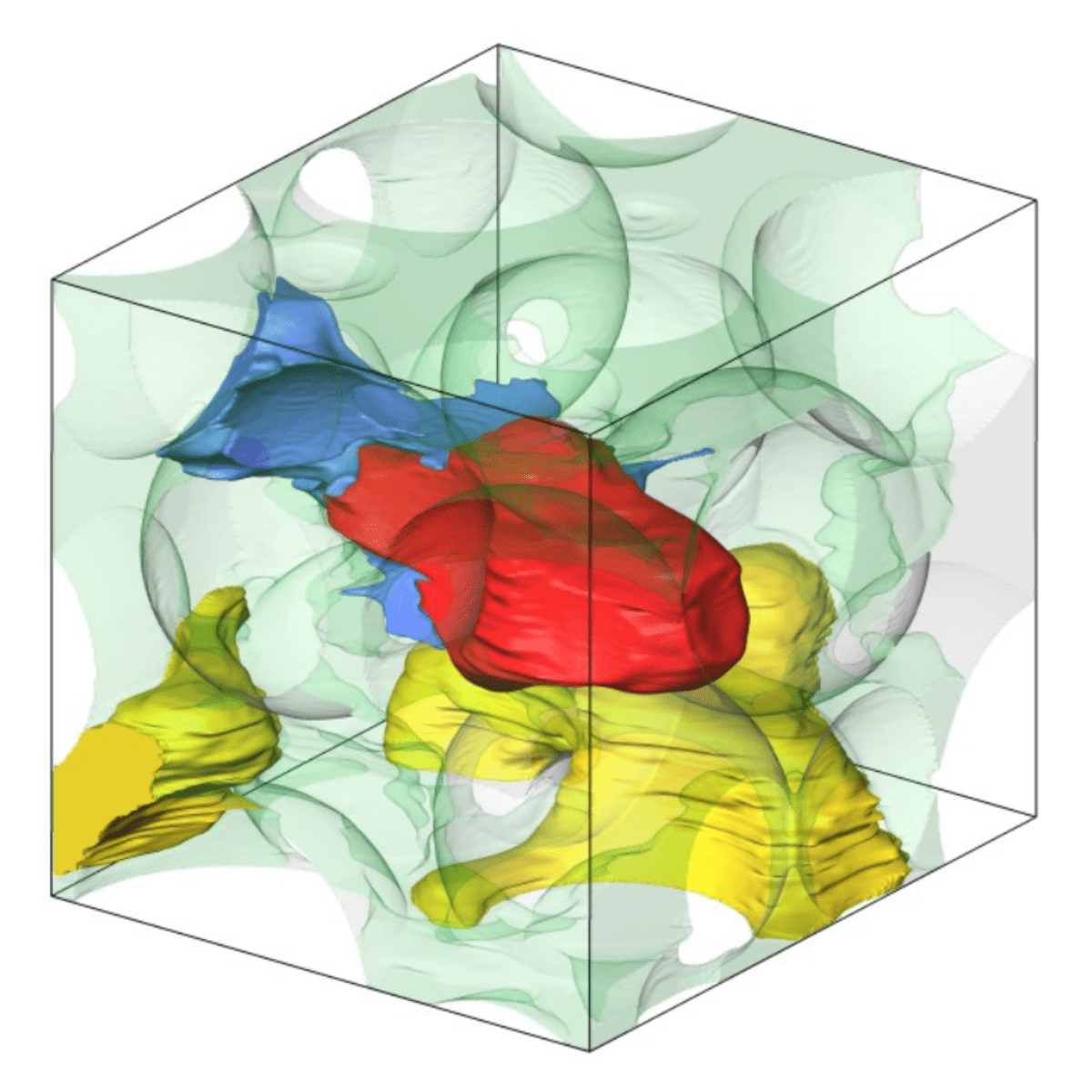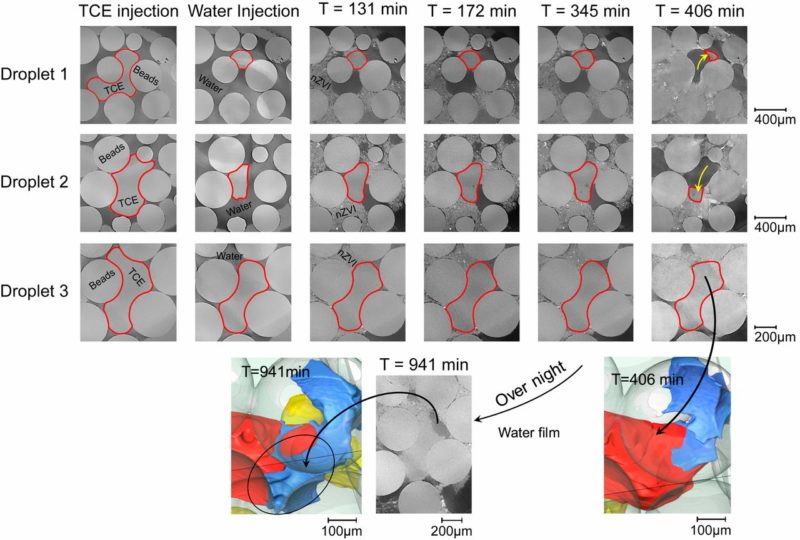
Example of rendered TCE droplet (red). The droplet was remobilized by the gas phase (yellow). This TCE droplet was subjected to gradual degradation and water film formation (blue). The suspension of iron nanoparticles (nZVI) is rendered in green.
Research reveals mechanisms of action of iron nanoparticles used in aquifer decontamination
Chlorinated hydrocarbons are among the most persistent contaminants in groundwater reserves – aquifers – worldwide. The problem is characteristic of industrialized regions, where substances were widely used, until the 1980s, as solvents, degreasers, in enamels for car painting and in dry cleaning, among other applications. Very small amounts of these pollutants are enough to make these waters unfit for human consumption, as they cause damage to the kidneys and liver, and cancer.
The usual technologies for removing this type of pollutant involve the treatment of water after it is brought to the surface. However, in addition to its high cost, this method does not fully solve the problem, as there will always be a volume of contaminant remaining on the subsurface. Because they are denser than water, chlorinated hydrocarbons sink until they reach a less permeable region, usually the bed of an aquifer. There, in the pores of the rocks, the pollutants persist for many years and are slowly carried by the waters, contaminating regions far from the source.
Thus, researchers from the Brazilian Synchrotron Light Laboratory (LNLS), and collaborators, investigated the use of iron nanoparticles for the degradation of pollutants at the source of this problem. Although the effect of the nanoparticles is already known, the group showed for the first time how this reaction occurs in a condition similar to that of a real aquifer, that is, what happens in the pores of rocks during the reaction between nanoparticles and contaminants.
Using LNLS’ X-ray microtomography beamline (IMX), the researchers were able to observe the interaction between iron nanoparticles and the chlorinated hydrocarbon trichlorethylene (TCE) in a simulated environment of remediation processes already used in groundwater.
The team identified two distinct processes. The first process was the formation of a gas phase that causes remobilization of the residual contaminant in the porous medium. This process is not necessarily a desirable effect for in-situ remediation, but it is important to know about it to improve the remediation projects. The second process is the direct degradation of the contaminant at the TCE/nanoparticle interface. This process is not a common practice, but this study showed its viability. According to the researchers, the results should enable the design of optimized nanorremediation strategies, in addition to supporting the regulation of these techniques.

2D µCT images of TCE droplets. The round objects are the glass spheres. TCE (light gray, homogeneous), water (medium gray), gas (dark gray, homogeneous) and suspension of iron nanoparticles denoted nZVI (irregular light gray with bright spots) are shown. The boundaries of the TCE phase are highlighted with red lines for clarity. The displacement of TCE gas is shown with yellow arrows.
Source: Tannaz Pak, Luiz Fernando de Lima Luz, Tiziana Tosco, Gabriel Schubert Ruiz Costa, Paola Rodrigues Rangel Rosa, Nathaly Lopes Archilha, Pore-scale investigation of the use of reactive nanoparticles for in situ remediation of contaminated groundwater source, Proceedings of the National Academy of Sciences Jun 2020, 117 (24) 13366-13373. DOI: 10.1073/pnas.1918683117
Research explores wave-particle duality to accelerate light in a two-dimensional crystal using functional substrates
Research reveals new mechanisms and strategies to break plant polysaccharides and generate interesting by-products